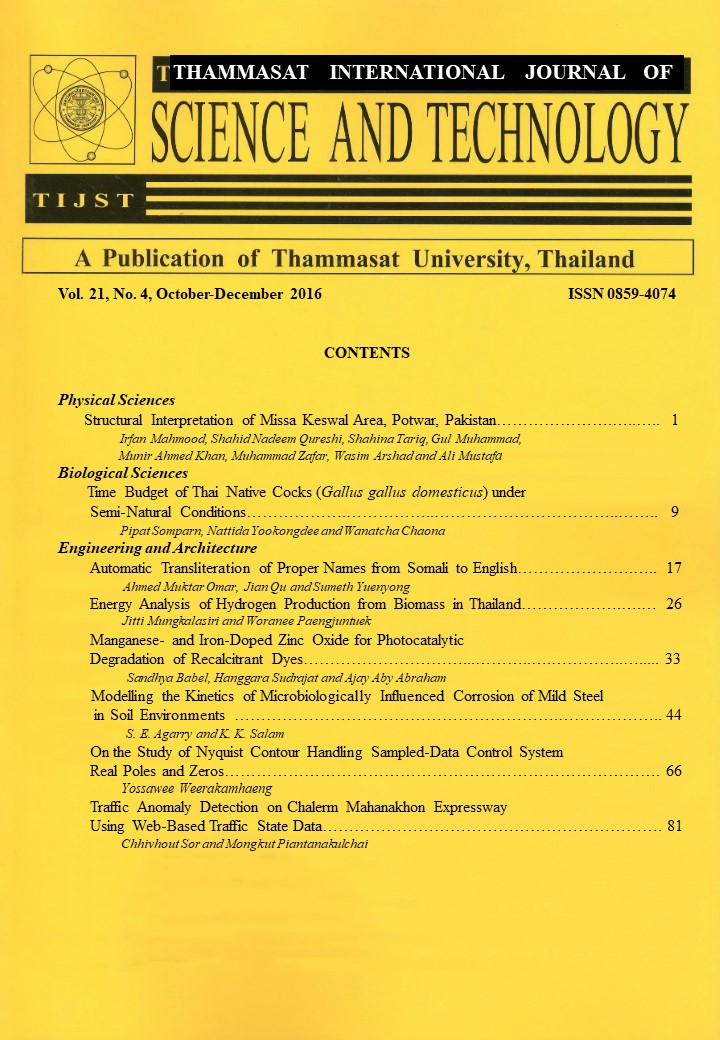Modelling the Kinetics of Microbiologically Influenced Corrosion of Mild Steel in Soil Environments
Main Article Content
Abstract
The objective of this study was to investigate the microbiologically induced corrosion of mild steel in soil by analyzing the physico-chemical and biological characteristics of the soil environment. Soil from three different locations (Lagos, Port Harcourt and Ogbomoso) was used for the study. Weight loss method, microstructure examination and Fourier transform infrared (FTIR) analysis were used for the investigation. The results of the physicochemical and biological characteristics showed that the levels of measured parameters in soil samples are consistent with the conditions in an environment that promotes and sustain microbiologically influenced corrosion. The weight loss method showed that the mild steel suffered from general corrosion. The microstructure examination showed that the presence of biofilm on the surface of the mild steel coupon (MSC) caused pitting corrosion while FTIR depicted the presence of extracellular polymeric substances in the biofilms capable of inducing corrosion. The corrosion data of MSC in the soil environment were analyzed by first order kinetic model and Monod form of kinetic model (Types A and B), respectively. The kinetic models fitted very well to the corrosion data; however, the Monod form of kinetics (Type B) gave the best correlation ( = 0.9978, 0.9839 and 0.9993) with a maximum specific corrosion rate of 0.893, 0.734 and 0.640 mils per year for MSC buried in Lagos, Port Harcourt and Ogbomoso soil, respectively.
Article Details
How to Cite
Agarry, S. E., & Salam, K. K. (2016). Modelling the Kinetics of Microbiologically Influenced Corrosion of Mild Steel in Soil Environments. Science & Technology Asia, 21(4), 44–65. retrieved from https://ph02.tci-thaijo.org/index.php/SciTechAsia/article/view/72009
Section
Engineering


